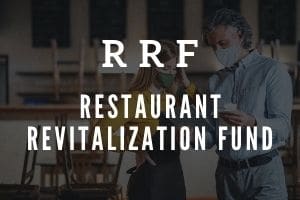
Styles of Mediation
It is important to note that this article is limited to the most popular modern methodologies used in the United States today. Most mediators have their own personal style or blend of techniques and, thus, use more than one of the techniques listed below.
Facilitative
The oldest type of mediation technique practiced as part of the modern judicial system and, as such, is thought to be the genesis of mediation practice here in the U. S. In the facilitation approach, the mediator will meet with all parties in joint sessions. The mediator will ask questions and prompt each individual in a way designed to understand and connect with each parties’ emotions, to search hidden interests of the parties, and to assist the parties in generating options for resolution. Validation is considered to be very important in this method because many times parties feel as though the other side is not listening. Therefore, the Mediator tries to genuinely connect with each party and build trust. The mediator must remain neutral, so it is critical the the mediator validate emotions and not positions. By modeling listening for both parties, the mediator is accomplishing 2 things: 1) the party speaking is being heard and understood, maybe for the first time, and 2) following the mediator’s example the opposing party may be actually listening to and understanding the speaking party for the first time. This allows parties to start healing and stop dwelling on the past. Once this happens, they can focus on the future and resolving their dispute. Thus, this process can be summarized as a coming to terms with the past, then generating options in the present, and then actually moving on in the future. In this approach, there is a emphasis on guiding the parties to come to their own resolutions based upon information and understanding. Though there may be some use of separate caucuses in this process, Facilitative mediators prefer to stick to joint sessions as much as possible.
Here in Texas, joint sessions are very rare and most mediations are conducted in caucus only. The Facilitative approach has been criticized for the amount of time it takes and has a higher risk of not reaching resolution. However, because the parties have taken control and responsibility for coming up with a resolution, resolutions that are reached through this method are thought to be longer lasting. It is important to note that the goal of this method is to reach a greater understanding of each other, not just in settling the case.
Transformative
Very similar to Facilitative mediation, but here the mediator allows the parties to completely set up their own structure for the process. This process focuses heavily on joint session like the Facilitative mediation. In these sessions, the mediator attempts to have parties recognize each other’s needs, interests and points of view. Because of the similarity between Transformative and Facilitative mediation, they both have many of the same criticisms.
Proposal Based Mediation
Developed by pioneers like Bill Eddy of the High Conflict Institute (http://www.highconflictinstitute.com/billeddy), this mediation technique was designed to tackle mediation where parties are in high conflict situations. In his research, Bill Eddy came to realize that there are some personality types that are high conflict personality types. For example: Anti-social, Narcissistic, Borderline, Paranoid and Histrionic. These individuals do not benefit from the validation technique used in the Facilitative approach because the more they are emotionally validated the more entrenched in their positions and the past they become. This makes it nearly impossible for them to move forward beyond their conflicts. Therefore, in High Conflict Mediation, a method of limiting the process to proposals and counter proposals is far more effective for these personality types. This keeps parties out of their emotions and out of dwelling in the past, while keeping them focused on solving the problems in front of them. It does not allow them to vent their emotions and become more entrenched in their positions. Even though this method was developed for high conflict personalities, many use this method in normal mediation with great success. It also serves to cut down on the time that the Facilitative approach is often criticized for, but may in some ways, this method reduces the effectiveness of the process in terms of coming to a greater understanding of the other parties.
Evaluative
This is the most controversial approach. In an Evaluative process the mediator is given the option to formally and/or informally make recommendations as well as point out issues or concerns that the parties have not considered. Mediators are much more active participants in this type of process. This methodology is based much more heavily on legal rights, and as a result, may be preferred by attorneys who are concerned that the traditional Facilitative process may result in inequitable results. This is especially true since Facilitative methodology does not require the mediator to have any subject matter expertise in the matter being adjudicated, where as in an Evaluative process the mediator is typically a subject matter and legal expert. This process also uses more caucus style sessions and little, if any, joint sessions with all parties involved.
For more information, please feel free to contact us.





